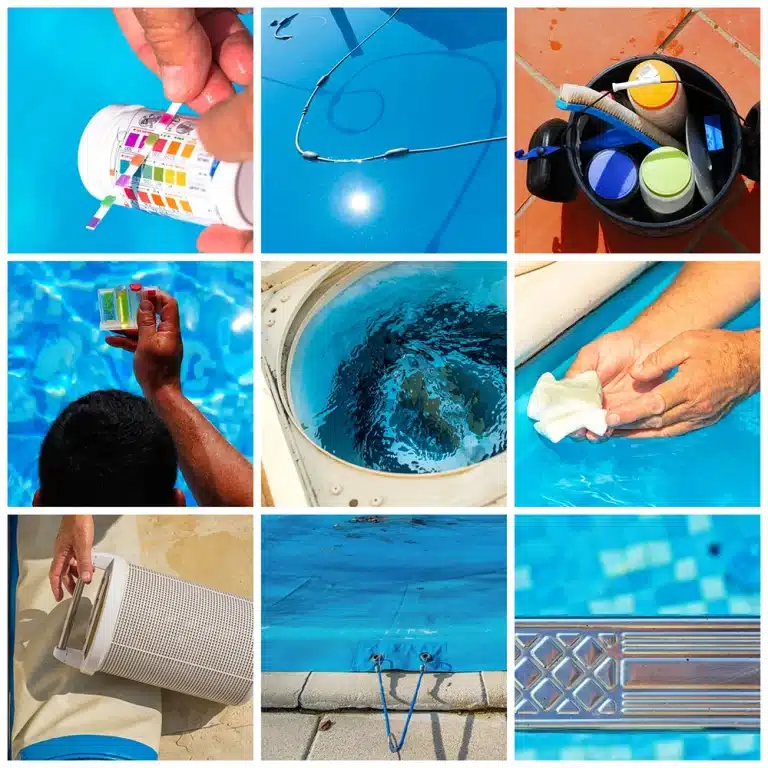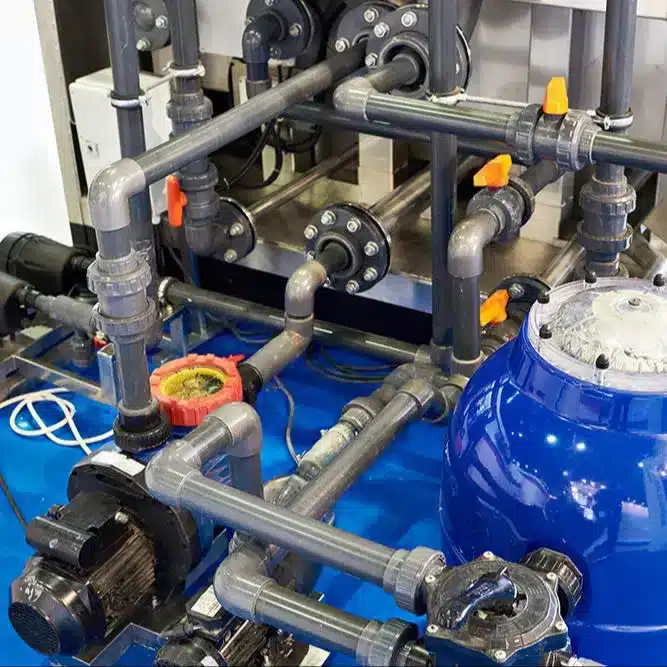

Once a day
Once a week
Once a month
Once a year
Once a day
Once a week
Once a month
Once a year
pH is a reading scale between 0 and 14. When pH is 7 it means that the water is neutral. (it isn’t acidic or alkaline) When pH is under 7 the water is acidic and when it’s over 7 it becomes alkaline. Too acidic water can cause eye tingling, corrosive to metal parts and may make the water green if the devices contain copper or copper alloys. Signs of too alkaline water can be cloudy or milky water as well as limescale deposits. In this case, the effect of chlorine is reduced and the water feels greasy and uncomfortable when swimming.
Free cholorine is a chlorine reserve which is obligatory in pool water. It inhibits bacterial growth and it doesn’t smell.
Bound cholorine also known as chloramine is a sign of water contamination and its amount must be kept as low as possible. It is formed by the reaction of free chlorine with urine, sweat and skin excretions. Bound chlorine gives the water a typical swimming hall smell.
Bromine is a halogenated element which has been developed to be a disinfectant for swimming and domestic water. It acts in much the same way as chlorine, by oxidizing and decomposing. Excessive amounts of bromine can corrode steel parts and slab joints, for example. If the bromine content is too low, the water will become cloudy and algae growth may form.
Cyanuric acid may form in the pool, for example if chlorine is used daily in the pool (stabilized chlorine). 2 kilograms of stabilized chlorine bear 1 kilogram of cyanuric acid which brings cyanuric acid concentration to 50 mg/l in 20 m³ of water. Too much of the substance causes a “chlorine lock” in the water, a state where chlorine is chemically bound and ineffective. The symptoms are greenish water, even if the measurements result in a high chlorine content. When cyanuric acid content is too high (80 – 100 mg/l or over) the excess must be removed by adding clean new water to the pool, followed by the use of unstabilized chlorine, such as calcium hypochlorite.
Total alkalinity is measured with an alkalinity meter which gives a numerical value indicating the amount of hydrogen carbonate contained in the water. Hydrogen carbonates work as pH buffers or pH “brakes” in water and there must always be a certain number of them. Low alkalinity in water causes steep changes in pH when adding even a small amount of pH Plus or pH Minus. High alkalinity prevents pH changes.
Water hardness 200 – 300 mg/l means that the water is hard which can make the water cloudy and unclear and form limescale deposits on the edges and bottom of the pool when pH is too high. 0 – 50 mg/l means that the water is soft which corrodes metal parts of the pool as well as tiles and sealing material.


MO-FR 9:00 – 15:00
SA-SU CLOSED